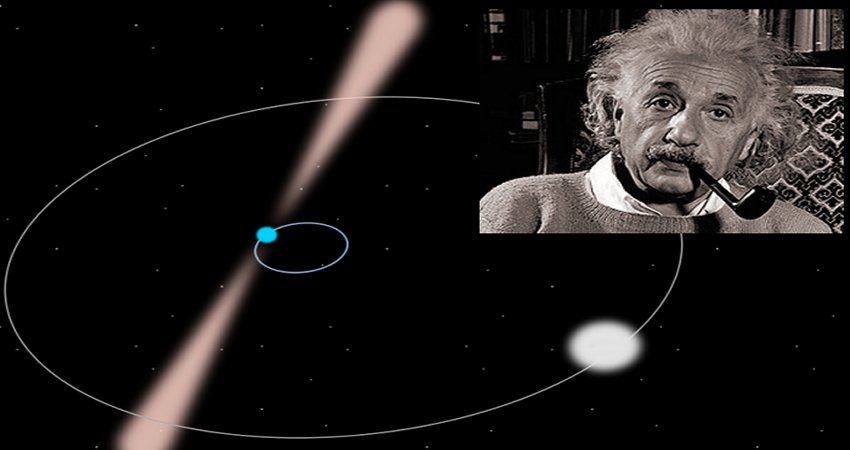Eddie Gonzales Jr. – MessageToEagle.com – Once again Einstein’s theory of general relativity holds up.
An international collaboration of scientists (using a radio telescope) has recorded the most accurate confirmation to date for one of the cornerstones of Einstein’s theory of general relativity, ‘the universality of free fall.”
Scientists can now accurately observe the signal produced by pulsars, a type of neutron star, and test the validity of Einstein’s theory of gravity for these extreme objects. In particular, the team analyzed the signals from a pulsar named “PSR J0337+1715′ recorded by the large radio telescope of Nançay, located in the heart of Sologne (France).
The universality of free fall principle states that two bodies dropped in a gravitational field undergo the very same acceleration independently of their composition. This was first demonstrated by Galileo who famously would have dropped objects of different masses from the top of Pisa’s tower to verify that they both reach the ground simultaneously.
This principle is also at the heart of Einstein’s theory of general relativity. However, some hints such as the inconsistency between quantum mechanics and general relativity, or the conundrum of the domination of dark matter and dark energy in the composition of the Universe, have led many physicists to believe that general relativity might not be, after all, the ultimate theory of gravity.
The observations of Pulsar J0337+1715, which is a neutron star with a stellar core 1.44 times the mass of the Sun that has collapsed into a sphere of the only 25km in diameter, shows that it orbits two white-dwarf stars which have a much weaker gravity field. The findings, published today in the journal Astronomy and Astrophysics, demonstrate the universality of free fall principle to be correct.
Dr. Guillaume Voisin from The University of Manchester who led the research said: “The pulsar emits a beam of radio waves which sweeps across space. At each turn, this creates a flash of radio light which is recorded with high accuracy by Nançay’s radio telescope. As the pulsar moves on its orbit, the light arrival time at Earth is shifted. It is the accurate measurement and mathematical modeling, down to nanosecond accuracy, of these times of arrival that allows scientists to infer with exquisite precision the motion of the star.
“Above all, it is the unique configuration of that system, akin to the Earth-Moon-Sun system with the presence of a second companion (playing the role of the Sun) towards which the two other stars ‘fall’ (orbit) that has allowed to perform a stellar version of Galileo’s famous experiment from Pisa’s tower. Two bodies of different compositions fall with the same acceleration in the gravitational field of a third one.”
The measurements were recorded by a collaborative team from The University of Manchester, Paris Observatory—PSL, the French CNRS and LPC2E (Orléans, France), and the Max Planck Institute for Radio Astronomy.
The pulsar orbits two white-dwarf stars, one of which orbits the pulsar in only 1.6 days at a distance about 10 times closer to the pulsar than the planet Mercury is from the Sun. This binary system, a bit like Earth and Moon in the solar system, orbits with a third star, a white dwarf of 40% the mass of Sun, located slightly further than the distance separating the Earth-Moon system from the Sun.
The team has demonstrated that the extreme gravity field of the pulsar cannot differ by more than 1.8 part per million (with a confidence level of 95%) from the prediction of general relativity.
Written by Eddie Gonzales Jr. – MessageToEagle.com Staff








